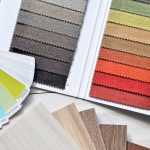When it comes to microplastic shedding, not all fabrics are created equal. Synthetic materials like polyester and nylon are the main offenders, releasing tiny particles with each wash. However, there are ways to make smarter choices that can lessen your impact on the environment. By understanding which fabrics shed the most and adopting better practices, you can contribute to a more sustainable wardrobe. But what specific steps can you take to reduce this pollution?
Table of Contents
Key Takeaways
- Synthetic fabrics like polyester, nylon, and acrylic are major contributors to microplastic shedding during use and washing.
- Natural fabrics such as cotton, linen, and wool shed significantly fewer microplastics, making them more environmentally friendly.
- Tighter weaves and advanced finishing treatments in manufacturing can minimize fiber detachment and reduce shedding rates.
- Washing clothes in cold water, using microfiber-catching bags, and limiting wash cycles help decrease microplastic release during laundry.
- Upgrading wastewater treatment facilities with advanced filtration technology can effectively capture microplastics, reducing environmental pollution.
Types of Fabrics and Their Microplastic Shedding Rates
When you consider the types of fabrics in your wardrobe, it’s important to recognize how they contribute to microplastic pollution.
Synthetic fabrics like polyester, nylon, and acrylic are notorious for shedding microplastics during washing and wear. These materials can release thousands of tiny fibers that end up in our waterways.
In contrast, natural fabrics such as cotton, linen, and wool tend to shed considerably less, making them more environmentally friendly choices.
Blends containing synthetic fibers can vary in shedding rates, so it’s wise to check labels before purchasing.
By understanding these differences, you can make informed decisions about your clothing and help reduce the impact of microplastic pollution on our planet.
Choose wisely and wear responsibly!
Manufacturing Techniques to Reduce Shedding
To combat microplastic shedding, manufacturers are adopting innovative techniques that enhance fabric durability and reduce fiber loss. One effective method involves using tighter weaves and blends, which minimize the likelihood of fibers detaching during wear and washing.
Manufacturers are also exploring advanced finishing treatments, like chemical bonding, that help hold fibers in place. Another promising approach is incorporating natural fibers with synthetic ones, creating a more resilient fabric that sheds fewer microplastics.
Additionally, some brands are investing in new technologies that monitor and improve the production process, ensuring higher quality and lower shedding rates. By implementing these techniques, manufacturers aim to produce fabrics that aren’t only eco-friendly but also provide better performance for consumers.
Laundry Practices That Minimize Microplastic Release
While washing your clothes might seem harmless, it can greatly contribute to microplastic pollution if you’re not careful. To minimize this impact, consider these laundry practices:
| Practice | Benefits |
|---|---|
| Wash in cold water | Reduces fiber shedding |
| Use a Guppyfriend bag | Captures microfibers |
| Limit wash cycles | Less frequent washing means less shedding |
| Choose shorter cycles | Reduces agitation and wear |
| Air dry clothes | Minimizes mechanical stress |
Wastewater Treatment and Filtration Solutions
As the awareness of microplastic pollution grows, effective wastewater treatment and filtration solutions become essential in mitigating its impact on the environment. You can play a role in this by understanding how these systems work.
Advanced filtration technologies, such as membrane filters and activated carbon, can capture microplastics before they enter our waterways. Additionally, upgrading existing wastewater treatment plants to include microplastic filtration can greatly reduce pollution levels.
Some facilities are even incorporating innovative technologies like hydrodynamic separation that targets smaller particles. By advocating for and supporting these solutions in your community, you help guarantee cleaner water.
Staying informed about local wastewater practices also empowers you to push for improvements, ultimately contributing to a healthier planet for everyone.
Future Directions for Sustainable Fabric Production
Given the urgent need to address microplastic pollution, the future of sustainable fabric production hinges on innovative approaches that prioritize eco-friendly materials and processes.
You can expect brands to invest in biodegradable fibers, such as Tencel and organic cotton, which break down naturally. Additionally, more companies are exploring closed-loop systems that recycle fabric waste into new textiles.
Emphasizing transparency in supply chains will also help you make informed choices about the fabrics you buy. Furthermore, advancements in technology, like waterless dyeing methods and sustainable manufacturing techniques, will minimize environmental impact.
Frequently Asked Questions
How Can I Identify Microplastic Shedding Fabrics When Shopping?
When shopping, look for labels indicating fabric composition. Avoid synthetic materials like polyester and nylon. Opt for natural fibers, such as cotton or linen, which generally shed fewer microplastics. Check for eco-friendly certifications too!
Are There Any Eco-Friendly Brands Focusing on Low-Shedding Fabrics?
Imagine a garden where flowers bloom without polluting the air; eco-friendly brands like Patagonia and Tentree nurture sustainability. By choosing their low-shedding fabrics, you’re cultivating a healthier planet while enjoying stylish, responsible clothing.
What Impact Do Microplastics Have on Pets and Wildlife?
Microplastics harm pets and wildlife by entering their bodies, causing health issues like inflammation and digestive problems. You can help by reducing plastic use and supporting initiatives aimed at cleaning up our environment for all creatures.
Can Microplastics Accumulate in Home Environments?
Microplastics can settle in your carpets, hide in your furniture, and linger in the air. As you sweep, vacuum, or dust, you’re not just cleaning—you’re also stirring up tiny particles that could accumulate.
How Do Microplastics Affect Soil Health and Agriculture?
Microplastics can harm soil health by disrupting microbial communities, reducing nutrient availability, and affecting plant growth. You’ll need to take into account their presence when evaluating soil quality and agricultural productivity to guarantee sustainable farming practices.
- Recycling Nonwoven Fabrics: Is It Possible? - July 11, 2025
- Recycling Nonwoven Fabrics: Is It Possible? - July 11, 2025
- Recycling Nonwoven Fabrics: Is It Possible? - July 11, 2025





